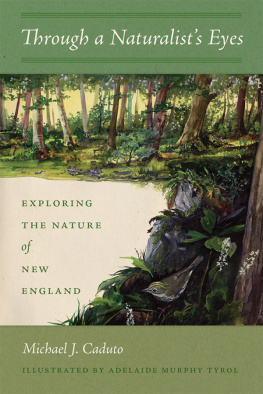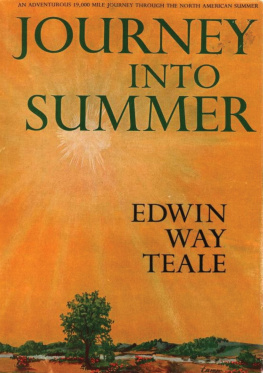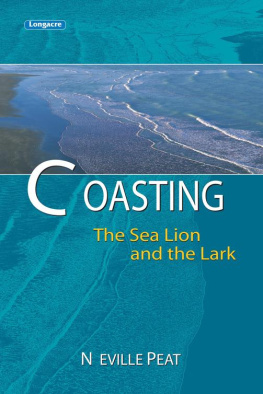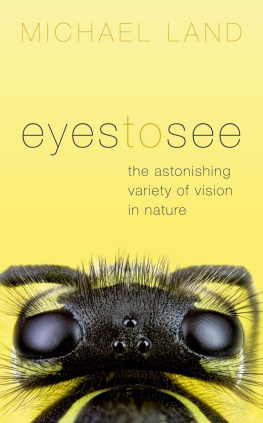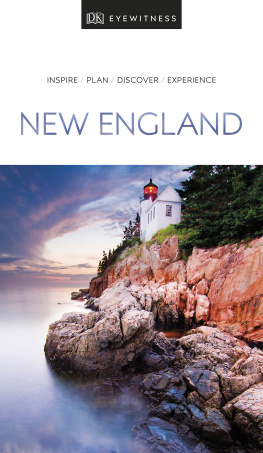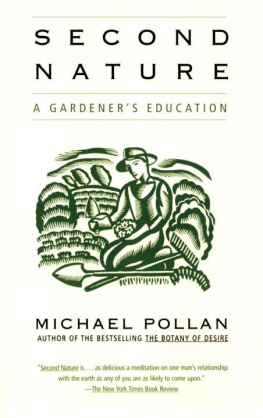Michael J. Caduto - Through a Naturalists Eyes: Exploring the Nature of New England
Here you can read online Michael J. Caduto - Through a Naturalists Eyes: Exploring the Nature of New England full text of the book (entire story) in english for free. Download pdf and epub, get meaning, cover and reviews about this ebook. year: 2016, publisher: University Press of New England, genre: Romance novel. Description of the work, (preface) as well as reviews are available. Best literature library LitArk.com created for fans of good reading and offers a wide selection of genres:
Romance novel
Science fiction
Adventure
Detective
Science
History
Home and family
Prose
Art
Politics
Computer
Non-fiction
Religion
Business
Children
Humor
Choose a favorite category and find really read worthwhile books. Enjoy immersion in the world of imagination, feel the emotions of the characters or learn something new for yourself, make an fascinating discovery.
- Book:Through a Naturalists Eyes: Exploring the Nature of New England
- Author:
- Publisher:University Press of New England
- Genre:
- Year:2016
- Rating:4 / 5
- Favourites:Add to favourites
- Your mark:
- 80
- 1
- 2
- 3
- 4
- 5
Through a Naturalists Eyes: Exploring the Nature of New England: summary, description and annotation
We offer to read an annotation, description, summary or preface (depends on what the author of the book "Through a Naturalists Eyes: Exploring the Nature of New England" wrote himself). If you haven't found the necessary information about the book — write in the comments, we will try to find it.
A journey through the natural world of New England, with an expert guide, and reflections on the relationship between nature and humankind
Through a Naturalists Eyes: Exploring the Nature of New England — read online for free the complete book (whole text) full work
Below is the text of the book, divided by pages. System saving the place of the last page read, allows you to conveniently read the book "Through a Naturalists Eyes: Exploring the Nature of New England" online for free, without having to search again every time where you left off. Put a bookmark, and you can go to the page where you finished reading at any time.
Font size:
Interval:
Bookmark:


Acknowledgments
FIRST, AND MOST SINCERELY, to my wife, Marie Levesque Caduto, and to my other family and friends who lent their wholehearted support and endured the many ways in which I was absent while immersed in this manuscript. Thank you all for your understanding of the writing life.
To Adelaide Murphy Tyrol, for creating the inspiring cover image and the rich and diverse interior illustrations that animate the words and bring readers face to face with the many plants, animals, and landscapes that they encounter herein.
And to the many colleagues whose time and energy made this book possible. Every book is a collaborative effort born of the ideas, support, and generosity of a small creative community. My gratitude to the talented and dedicated staff at the University Press of New England who brought this book to life and sent it out into the world: Dr. Phyllis Deutsch, editor-in-chief; Michael Burton, director; Peter Fong, production editor; Sherri Strickland, sales manager; Rick Henning, director of marketing and sales; Barbara Briggs, publicist; and Thomas Haushalter, marketing manager. A special appreciation to the designer, Mindy Basinger Hill, for creating the pleasing book you hold in your hands. Having worked with some of the staff for over twenty-five years, my appreciation continues to grow for the role that UPNE plays in introducing popular, literary, and scholarly books to readers.
Most of the essays in this present book are adapted and expanded from columns I originally wrote for the popular syndicated newspaper series The Outside Story, which is assigned and edited by Northern Woodlands magazine (northernwoodlands.org) and sponsored by the Wellborn Ecology Fund of New Hampshire Charitable Foundation (nhcf.org). I cant say enough about the patience and generosity of the excellent Outside Story editors with whom Ive worked since 2002, including Virginia Barlow, Dave Mance III, Meghan Olliver, Elise Tillinghast, Chuck Wooster, and Dirk Van Susteren.
As a nature writer, Ive also been fortunate to work with the editors at Mass-Audubon for the past fifteen years, writing regularly for Sanctuary Magazine. Ive grown as a writer while enjoying many wonderful creative experiences collaborating with the staff, including John Hanson Mitchell (editor), Ann Prince (associate editor), and Rose M. Murphy (production editor).
Reviewers who read and comment on a manuscript are a critical part of any project of this magnitude. My heartfelt thanks to the major reviewers of this manuscript: Dr. Walter Ellison, lecturer on biology at Washington College in Chestertown, Maryland; and Marie Levesque Caduto, watershed coordinator for the Vermont Agency of Natural Resources.
Many experts in their respective fields gave generously of their time to review individual chapters, including Chris Bernier, Furbearer Project leader, Vermont Fish and Wildlife Department; Dr. Michael Blust, professor of biology, emeritus, Green Mountain College; Dr. Donald Cheney, associate professor, emeritus, Marine Science Center, Northeastern University; Mark Ferguson, zoologist, Natural Heritage Inventory, Vermont Department of Fish and Wildlife; Alan C. Graham, Vermont state entomologist; Blair Nikula, co-author, Stokes Beginners Guide to Dragonflies and Damselflies; Amy Singler, American Rivers; Rebecca Suomala, senior biologist, New Hampshire Audubon; and Harry S. Vogel, senior biologist and executive director, Loon Preservation Committee in Moultonborough, New Hampshire.
Charles H. Ashton, of Ashton Indexing, created a comprehensive referencea map of literary tracks and signsto help the reader locate the subjects and names that weave through the pages of this book.
And finally, to you, the reader, who completes the circle by bringing this book to life in your imagination.

Mouse or Mole, Shrew or Vole?
PETRUCHIOS PURSUIT, the bane of Padua, had a bark that cowered the meek, and a bite to match. Katherine the Shrew delivered her barbed wit with a rapier tongue.
If I be waspish, she forewarned, best beware my sting.
But Petruchios charms, and persistent parries, countered Katherines thrusts until, by the end of her tale, she was bereft of both bark and bite.
The famous shrew of Shakespeares realm has nothing over the one that wanders our woodlands and fields. Among the most common mammals of New England, the northern short-tailed shrew tunnels below the radar of all but the most ardent naturalist. And although its shrill voice can reach above the range of human hearing, the bite of this mouse-sized marvel would put Petruchios passion to shame, for it delivers a poison that can paralyze and kill its prey.
Our tale of the short-tailed begins with its name: Blarina brevicauda, where brevicauda is Latin for short tail. If I had been a naturalist in Old England, I would have become wealthy if Id had a twopence for every time a horses hooves stirred the dust at my door and the rider dismounted with a flourish, bearing the familiar query: Master of this house, I would beseech thee, what manner of creature is this that my feline has dropped with felicity at my own stoop, be it neither mouse nor mole, but something of the two?
Mouse or mole, shrew or volewhen it comes to nature, we tend to stuff things we dont know into pigeonholes that are already defined by the familiar. If someone tells me their cat has left a present of a dead mouse on the doorstep, I ask the usual questions: How big is it? What color is the fur? How long is its tail? What size are the eyes and ears? How pointed is its nose? Because chances are that its not really a mouse.
Here in New England, the deceased is often a 4- to 5-inch-long northern short-tailed shrew, with its dark gray fur, inch-long tail, pinpoint eyes, sharp nose, fur-covered ears, and stubby legs bearing sharp claws for digging. And the cat is not necessarily leaving the shrew as a gift: short-taileds have glands on the hips and belly that emit such a strong, musky odor that most predators cant stomach the idea of eating one. Snakes and owls actually will partake of the pungent, as will other shrews, which have a poor olfactory sense.
With a rate of metabolism that is sixty times that of a human, shrews are more often the predator than the prey. Wielding sharp teeth, short-tailed shrews can consume more than their own weight each day. They are not fussy about who or what they eat; insects, worms, and spiders are fair game, as are centipedes and salamanders. Meadow voles are a popular item on the menu, along with mice, snakes, small rabbits, eggs, the hatchlings of ground-nesting birds, and even other shrews.
Short-tailed shrews are particularly effective predators for their size because they possess a weapon that is found among just a handful of mammals in existencea poisonous bite. The toxin, which flows up along the lower incisors and into the wound caused by the bite, is similar to the venom of cobras and coral snakes. It immobilizes prey and causes respiratory failure in small mammals.
As if poison didnt lend enough of an advantage, tunneling short-tailed shrews navigate like bats and dolphins: they emit ultrasonic clicks that reflect back to their ears to create an aural picture of the surroundings. From as far as two feet away, a short-tailed shrews echolocation helps it to find solid objects, holes, and places where grass may block a runway. Their sixth sense may even serve to identify predators and prey.
When the north wind blows, the short-tailed shrews short summer coat grows longer and turns a darker shade of gray, making it appear very mole-like. But moles are larger and more robust insectivores with powerful front shoulders and outsized front feet and claws. The star-nosed mole has a 3-inch-long tail and an unmistakable sunburst-shaped nose bearing twenty-two pink rays that encircle the tip. Another species of local mole, the hairy-tailed mole, is about 6 inches long. They have a short, furry tail and their backs are covered with fur that ranges from dark gray to black. In contrast, the rotund eastern mole has a sharp nose and naked tail. Each day, one of these feisty, 2- to 3-ounce critters can eat more than its own weight in earthworms, snails, millipedes, slugs, and insects. Their winter tunnels lie 10 to 20 inches beneath the surface.
Next pageFont size:
Interval:
Bookmark:
Similar books «Through a Naturalists Eyes: Exploring the Nature of New England»
Look at similar books to Through a Naturalists Eyes: Exploring the Nature of New England. We have selected literature similar in name and meaning in the hope of providing readers with more options to find new, interesting, not yet read works.
Discussion, reviews of the book Through a Naturalists Eyes: Exploring the Nature of New England and just readers' own opinions. Leave your comments, write what you think about the work, its meaning or the main characters. Specify what exactly you liked and what you didn't like, and why you think so.

